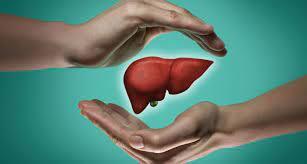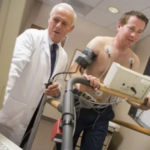
The liver, often hailed as the body’s metabolic powerhouse, plays a pivotal role in processing nutrients, detoxification, and synthesizing essential proteins. However, this vital organ can be susceptible to various diseases, one of which is liver fibrosis. In this blog, we will explore what liver fibrosis is, its causes, symptoms, diagnosis, and management options to shed light on this often misunderstood condition.
Understanding Liver Fibrosis
Liver fibrosis is a progressive scarring of the liver tissue, characterized by the accumulation of fibrous or scar tissue. This condition is the result of the liver’s response to injury or damage. While some degree of fibrosis can be a normal part of the healing process, excessive or prolonged scarring can disrupt liver function and lead to severe complications.
Causes of Liver Fibrosis
Several factors and conditions can contribute to the development of liver fibrosis, including:
1. Chronic Liver Diseases:
- Hepatitis B and C infections.
- Excessive alcohol consumption.
- Non-alcoholic fatty liver disease (NAFLD).
- Hemochromatosis (excess iron buildup in the body).
2. Autoimmune Disorders:
- Autoimmune hepatitis.
- Primary biliary cirrhosis.
- Primary sclerosing cholangitis.
3. Other Factors:
- Long-term exposure to certain medications or toxins.
- Bile duct disorders.
- Cystic fibrosis.
Symptoms of Liver Fibrosis
In the early stages, liver fibrosis often does not cause noticeable symptoms. As the condition progresses, individuals may experience:
- Fatigue and weakness.
- Abdominal discomfort or pain.
- Unexplained weight loss.
- Jaundice (yellowing of the skin and eyes).
- Swelling in the abdomen and legs (ascites).
- Dark urine and pale-colored stools.
Diagnosis and Assessment
Liver fibrosis is typically diagnosed through a combination of medical history, physical examination, blood tests, and imaging studies. Some common diagnostic methods include:
1. Blood Tests:
- Liver function tests to assess liver enzyme levels.
- Viral hepatitis serology.
- Tests to measure fibrosis markers.
2. Imaging Studies:
- Ultrasound, CT scan, or MRI of the liver.
- Transient elastography (FibroScan) to measure liver stiffness.
3. Liver Biopsy:
- In some cases, a liver biopsy may be performed to evaluate the degree of fibrosis and its underlying cause.
Management and Treatment
The management of liver fibrosis primarily depends on its underlying cause and the extent of liver damage. Some strategies include:
1. Treating Underlying Conditions:
- Addressing chronic viral hepatitis through antiviral medications.
- Managing autoimmune disorders with immunosuppressive drugs.
- Reducing or eliminating alcohol consumption for those with alcoholic liver disease.
2. Lifestyle Modifications:
- Maintaining a healthy weight through diet and exercise.
- Avoiding excessive alcohol consumption.
- Managing diabetes and high blood pressure.
- Vaccination against hepatitis B.
3. Monitoring and Follow-Up:
- Regular check-ups and monitoring of liver function.
- Screening for liver cancer in individuals at high risk.
In advanced cases, where significant liver damage has occurred, liver transplantation may be considered.
Conclusion
Liver fibrosis is a complex condition that underscores the liver’s remarkable ability to respond to injury. Early diagnosis and addressing the underlying causes are crucial for managing and potentially reversing fibrosis. Maintaining a healthy lifestyle and seeking medical care when necessary can go a long way in safeguarding your liver’s well-being. Remember that liver health is a vital component of overall well-being, and understanding liver fibrosis is a step toward better liver care.




